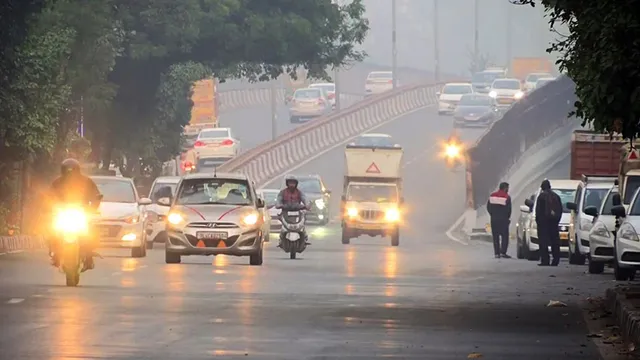- By Kamal Kumar
- Sat, 02 Nov 2024 12:21 PM (IST)
- Source:JND
Delhi Pollution: Though the Air Quality Index (AQI) of Delhi witnessed a rise, owing to the uncontrolled bursting of firecrackers in the capital city, it remained in the 'poor' category instead of deteriorating to 'severe', repeating a unique 2015 post-Diwali record. Climate experts have attributed this to the strong wind ventilation with speeds reaching up to 16 kilometres per hour.
The air quality index rose to 338 at midnight on Thursday and was worsening even further till Friday at 9 am - with the Central Pollution Control Board measuring an average AQI of 362 at 9 am yesterday. However, thanks to strong winds, the AQI was brought down by over 30 points bringing it to 323 by 7 pm on Friday evening. The strong, sustained winds cleared the thick dark clouds, bringing significant respite for the residents of the national capital.
ALSO READ: Lawrence Bishnoi's Brother Anmol To Be Brought Back From US; India Begins Extradition Process
With winters setting in, the stubble burning despite a Supreme Court ban on the practice, emissions from nearly industrial units and rampant bursting of firecrackers led the air pollution to the upper range of the 'very poor' category in the last week.
“Higher temperature keeps mixing height high and allows pollutants to move and disperse freely. Low temperature slows down wind speed and also traps pollutants closer to the surface through a phenomenon called inversion,” Mahesh Palawat, vice president at Skymet Meteorology said.
While typical winter months witness a mixing drop up to 200-300 metres, Thursday maintained a mixing height of 2,100 metres.
ALSO READ: Adani Power Cuts Electricity To Bangladesh After It Fails To Pay Bills Over USD 846 Million: Report
"Even though the air quality on Diwali was in the very poor category — hitting severe levels during midnight — these conditions dissipated quickly the next day to reach moderate levels by the afternoon. This is mainly because of relatively warm conditions with reasonable wind speed and natural ventilation. The deep calm winter inversion conditions are yet to set in. Despite this, the month of October has also seen more poor and very poor days than previous years, even when the contribution of farm fires has been just around 1-3%, indicating a very high impact of local and regional pollution,” Anumita Roychowdhury, executive director, Research and Advocacy at the Centre for Science and Environment (CSE) told The Times of India.

